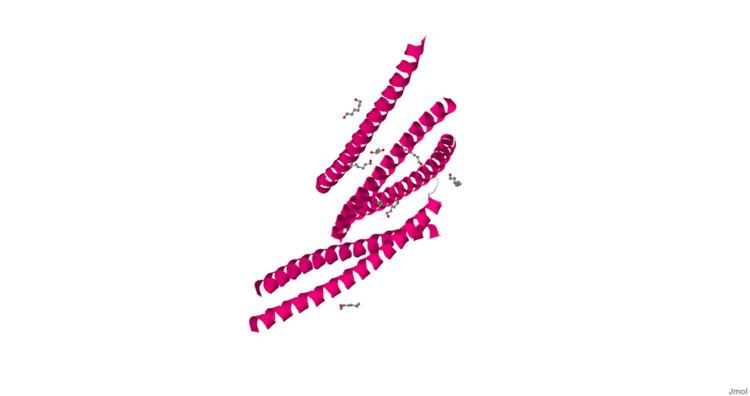Entrez 5592 OMIM 176894 | Alt. symbols PRKGR1B, PRKG1B HUGO 9414 RefSeq NM_006258 | |
 | ||
cGMP-dependent protein kinase or Protein Kinase G (PKG) is a serine/threonine-specific protein kinase that is activated by cGMP. It phosphorylates a number of biologically important targets and is implicated in the regulation of smooth muscle relaxation, platelet function, sperm metabolism, cell division, and nucleic acid synthesis.
Contents
Genes and proteins
PKG are serine/threonine kinases that are present in a variety of eukaryotes ranging from the unicellular organism Paramecium to humans. Two PKG genes, coding for PKG type I (PKG-I) and type II (PKG-II), have been identified in mammals. The N-terminus of PKG-I is encoded by two alternatively spliced exons that specify for the PKG-Iα and PKG-Iβ isoforms. PKG-Iβ is activated at ~10-fold higher cGMP concentrations than PKG-Iα. The PKG-I and PKG-II are homodimers of two identical subunits (~75 kDa and ~85 kDa, respectively) and share common structural features.
Each subunit is composed of three functional domains:
Binding of cGMP to the regulatory domain induces a conformational change which stops the inhibition of the catalytic core by the N-terminus and allows the phosphorylation of substrate proteins. Whereas PKG-I is predominantly localized in the cytoplasm, PKG-II is anchored to the plasma membrane by N-terminal myristoylation.
Tissue distribution
In general, PKG-I and PKG-II are expressed in different cell types.
Specifically, in smooth muscle tissue, PKG promotes the opening of calcium-activated potassium channels, leading to cell hyperpolarization and relaxation, and blocks agonist activity of phospholipase C, reducing liberation of stored calcium ions by inositol triphosphate.
Role in cancer
Cancerous colon cells stop producing PKG, which apparently limits beta-catenin thus allowing the VEGF enzyme to solicit angiogenesis.
